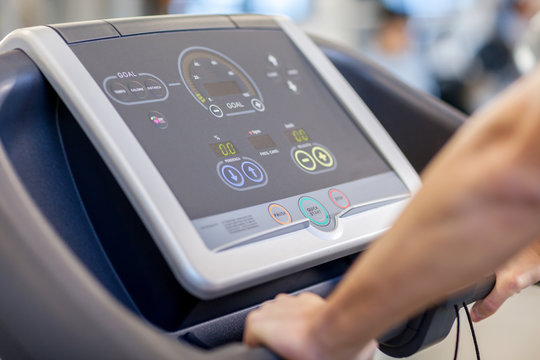The gym floor can be a jungle of metal and plastic, filled with an array of contraptions promising sculpted physiques and toned muscles. But with so many options, how do you know which machine is right for you? Understanding the science behind different gym equipment can be a game-changer in your workout routine.

Gymnasium with various equipment: Image of a bright and modern gym floor with weight machines, treadmills, and barbells
This blog dives deep into the biomechanics of popular gym equipment, explaining how they target specific muscle groups and what benefits they offer.
Biomechanics 101: The Language of Movement
Before we explore the machines, let’s establish a common ground. Biomechanics is the science that studies the body’s movements. It analyzes the forces acting on our bodies (kinetics) and how we move through space (kinematics). This knowledge is crucial for gym equipment designers to create machines that are effective and safe.
Here are some key terms you’ll encounter:
- Muscle Groups: Muscles work in pairs, with an agonist (prime mover) contracting to initiate movement and an antagonist (opposing muscle) providing stability and control.
- Force: The amount of push or pull exerted on an object, including the weight you lift or the resistance provided by a machine.
- Range of Motion (ROM): The full extent of movement possible in a joint.
- Lever Systems: Machines often utilize levers to create resistance and mimic natural body movements. Think about your elbow joint acting as a lever when you do a bicep curl.
The Iron Playground: A Breakdown of Common Gym Equipment
Now, let’s get down to business! Here’s a look at some popular gym equipment and the science behind their effectiveness:
1. Weight Machines: Isolation and Control
- Function: Weight machines isolate specific muscle groups by guiding your movement along a predetermined path. They often use weight stacks or hydraulic mechanisms for resistance.
- Science in Action: By limiting your movement pattern, weight machines can help target specific muscles for focused development. They can also be beneficial for beginners who are still learning proper form.
Image of a Weight Machine Lat Pulldown
Example: Lat Pulldown: This machine isolates your latissimus dorsi muscles (lats) in the back. The fixed path ensures constant tension throughout the ROM, promoting focused lat growth.
2. Free Weights: Building Strength and Stability
- Function: Free weights, like dumbbells and barbells, allow for unrestricted movement patterns, engaging multiple muscle groups. They require more core stabilization and balance.
- Science in Action: Free weights mimic natural body movements, promoting functional strength and better overall balance. The freedom of movement also allows for greater muscle recruitment, potentially leading to faster muscle growth.
Image of a barbell bench press
Example: Barbell Bench Press: This exercise works your chest (pectorals), shoulders (deltoids), and triceps. The free movement pattern challenges your core and stabilizer muscles, promoting overall strength development.
3. Cable Machines: Versatility and Progressive Overload
- Function: Cable machines offer a combination of free weights and weight machines. They use cables and pulleys to provide resistance, allowing for a wider range of motion compared to traditional weight machines.
- Science in Action: Cable machines offer versatility by allowing you to adjust the angle and direction of the force, targeting muscles from different angles. The weight can be easily adjusted using weight stacks or pins, making it easy to implement progressive overload (gradually increasing weight) for muscle growth.
Image of a Cable Machine Seated Row
Example: Seated Cable Row: This exercise works your back muscles, similar to a lat pulldown, but the cable allows for a more natural rowing motion, engaging additional stabilizer muscles.
4. Cardio Equipment: Boosting Your Heart Rate
- Function: Cardio equipment, like treadmills, ellipticals, and stationary bikes, elevate your heart rate and improve cardiovascular health.
- Science in Action: Cardio exercise strengthens your heart muscle, improves blood flow, and increases lung capacity. This translates to better endurance and overall fitness.
Image of a person running on a treadmill
Example: Treadmill: Running or walking on a treadmill simulates outdoor running, providing a low-impact cardio workout that strengthens your heart and legs.
Conclusion: Unleashing Your Inner Scientist
Understanding the science behind gym equipment empowers you to make informed choices about your workout routine. By selecting exercises that target specific muscle groups and challenge your body in different ways, you can maximize your results and reach your fitness goals faster. Remember, consistency and proper form are key to unlocking your full potential. So, hit the gym, experiment with different machines, and transform yourself into
